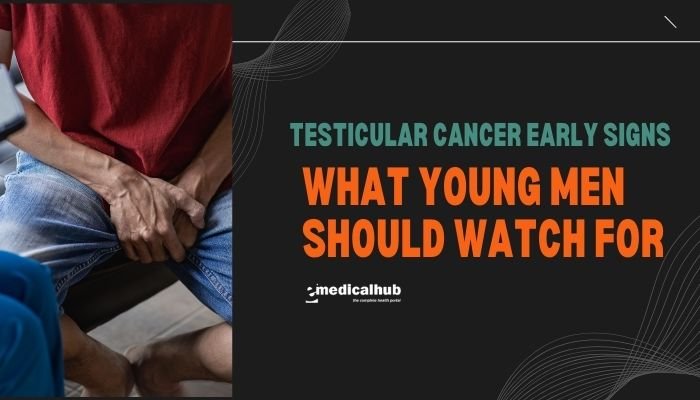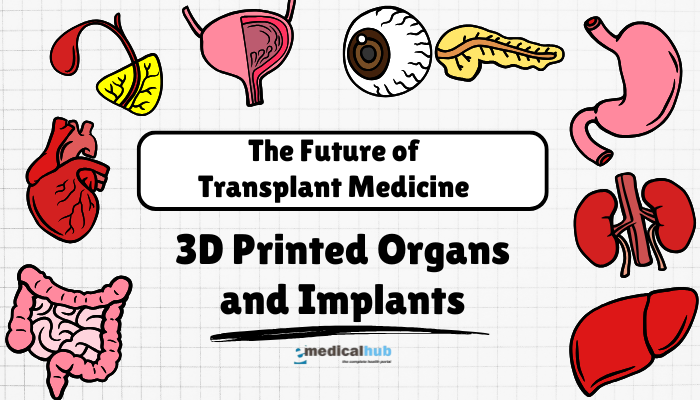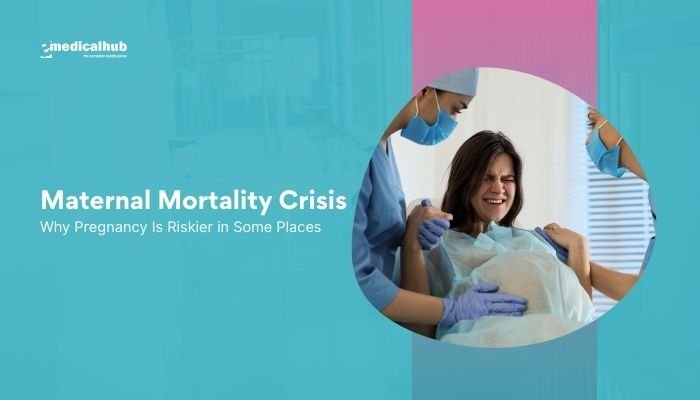Introduction
Testicular cancer is relatively rare, but it is the most common cancer in young men, especially those aged 15 to 35. When diagnosed early, testicular cancer often has high cure rates, making awareness and prompt attention to warning signs crucial.
While some men may feel uneasy discussing changes “down there,” recognizing early symptoms can lead to timely intervention, reduced treatment intensity, and favorable outcomes.
This article examines risk factors for testicular cancer, the common (and sometimes subtle) early signs, and best practices for self-examination. It also highlights what men should do if they notice abnormalities, the available diagnostic steps, and the importance of seeking professional guidance.
By staying informed about testicular health, young men can better advocate for themselves and ensure any concerning findings are addressed promptly.
Understanding Testicular Cancer
The Role of the Testes
- Anatomy: The testes (or testicles) are two oval-shaped glands inside the scrotum, responsible for sperm production and testosterone secretion.
- Cell Types: Germ cells in the testes produce sperm; most testicular cancers originate from these cells, hence the common term “germ cell tumors.”
- Two Main Categories: Seminomas and non-seminomas. Seminomas typically grow slower, while non-seminomas may have different subtypes (e.g., embryonal carcinoma, yolk sac tumor, choriocarcinoma, teratoma).
Prevalence and Risk Factors
- Primary Age Range: Young adult men, typically 15–35, though it can appear at any age.
- Known Risk Factors:
- Undescended Testicle (Cryptorchidism): If one or both testicles did not descend into the scrotum naturally, risk is higher.
- Family History: Having a father or brother with testicular cancer increases the likelihood.
- Personal History: If you previously had testicular cancer in one testis, the chance is elevated for the other.
- Race/Ethnicity: Higher incidence in White men compared to African American or Asian men.
- Lifestyle: Unlike some other cancers, diet or smoking factors are less clear, though general health measures are still encouraged.
Prognosis and Importance of Early Detection
- High Survival: Even in advanced stages, many forms of testicular cancer respond well to treatment—surgery, chemotherapy, or radiation.
- Early vs. Late: Identifying the disease early typically leads to less aggressive therapy and fewer side effects, underscoring the value of timely awareness.
Key Note: Being mindful of changes in the testicles enables earlier medical intervention, potentially saving more healthy tissue and preserving fertility.
Early Signs and Symptoms
Common Early Indicators
- Painless Lump: Often the first sign is a small, pea-sized swelling or irregularity in one testis. Some lumps might cause mild discomfort, but many are painless.
- Heaviness or Ache in the Scrotum: A sensation of pulling or heaviness can be a subtle early symptom, with or without a discrete lump.
- Change in Testicle Size: One testicle may enlarge or feel firmer than normal.
- Swelling or Fluid Accumulation: Some men notice a fluid-filled scrotum or an increase in overall scrotal size.
- Dull Pain in Lower Abdomen or Groin: Pain can radiate, but testicular lumps are not always painful.
Less Frequent Presentations
- Sudden Pain: Though most lumps are painless, occasionally a rapid onset of severe ache or discomfort might occur if there is bleeding within the tumor or other complications.
- Back Pain or Chest Symptoms: In advanced disease, metastases to lymph nodes or lungs can cause persistent back pain, cough, or shortness of breath, but this is more typical in later stages.
Why Men Miss Early Signs
- Lack of Routine Self-Checks: Many young men don’t habitually examine their testicles, making lumps or mild swelling easy to overlook.
- Embarrassment: Fear of discussing “private parts” with a doctor or denial might lead to ignoring a suspicious mass.
- Misattribution: Men may attribute a dull groin ache to muscle strain from sports, missing a deeper cause.
Takeaway: Any unusual swelling, shape change, or persistent ache in one testicle should prompt a check with a healthcare professional. Early lumps can be very small, so consistent self-exam is key.
How to Perform a Testicular Self-Exam
Timing and Frequency
- Monthly Routine: Conduct self-exams once a month; this consistency helps identify subtle changes.
- After a Warm Shower: Heat relaxes the scrotum, allowing easier palpation. The skin is looser, improving detection of lumps or irregularities.
Step-by-Step Guide
- Prepare: Stand in front of a mirror, check for any visible swelling or asymmetry.
- Support the Testicle: Gently hold one testicle between the thumbs and fingers of both hands.
- Palpation: Roll the testicle between your thumb and fingers, feeling for lumps or hardness. The normal testis should feel smooth, oval, and relatively uniform in consistency.
- Epididymis: Familiarize yourself with the epididymis (the soft, tubular structure at the back of the testis). Some men mistake this normal structure for a lump.
- Compare Sides: It’s normal for one testicle to be slightly bigger or hang lower, but watch for new changes or lumps.
Interpreting Findings
- Normal: Slight differences in size, a smooth spongy area at the epididymis.
- Concerning: A firm or hard lump, unusual nodules, areas of sensitivity, or notable enlargements.
- Next Steps: If in doubt, see a healthcare provider. “Better safe than sorry” is paramount; minor lumps might be benign, but evaluation rules out cancer.
Diagnostic Steps After Detecting Abnormalities
Medical Evaluation
- Physical Exam: The doctor will palpate the testicles, scrotum, and possibly the abdomen to check for enlarged lymph nodes.
- Scrotal Ultrasound: Non-invasive imaging that reveals whether a lump is solid (suggesting possible tumor) or fluid-filled (e.g., cyst or hydrocele).
- Tumor Markers: Blood tests measuring alpha-fetoprotein (AFP), beta-human chorionic gonadotropin (β-hCG), and lactate dehydrogenase (LDH). Elevated levels can indicate certain testicular tumors.
Referral to Specialists
- Urologist: Typically leads further investigation if a suspicious mass is found.
- Oncologist: If imaging or labs strongly suggest malignancy, an oncology consult may follow.
Possible Next Steps
- Orchiectomy: Surgical removal of the affected testis if cancer is strongly indicated, both diagnostic and therapeutic. Tissue is analyzed to confirm the exact tumor type.
- Imaging Scans: CT or MRI of the abdomen, pelvis, or chest if metastasis is suspected.
- Biopsy: Rarely done on the testis outside the standard approach because of concerns about spreading cancer cells. Typically, the procedure is to remove the entire testicle if strongly suspected malignant.
Treatment Options for Testicular Cancer
Surgical Removal (Orchiectomy)
- Primary Step: Removal of the malignant testis is the main curative approach for localized disease.
- Prosthesis Option: Many men choose a testicular prosthesis for cosmetic reasons.
- Preserving Fertility: If the other testis is healthy, hormone production and fertility might remain near-normal.
Radiation Therapy
- Use in Seminomas: Seminoma-type tumors often respond well to radiation, especially for stage I or II disease.
- Side Effects: Fatigue, potential risk to nearby tissues. Typically well-tolerated.
Chemotherapy
- Cisplatin-Based Regimens: Highly effective for advanced or non-seminomatous germ cell tumors.
- Systemic Approach: Kills cancer cells beyond the testis. Some men experience hair loss, nausea, or neuropathy, but cure rates remain high if started timely.
Surveillance and Follow-Up
- Monitoring: In some early-stage scenarios (like stage I seminom), active surveillance with regular imaging and blood tests can be chosen post-orchiectomy.
- Recurrence: If cancer returns, treatments remain effective in many cases, but immediate care is vital.
Fertility Preservation
- Sperm Banking: Offered pre-chemotherapy or radiation since these can impact fertility.
- Hormone Check: If both testicles or if the single testicle is removed, men may need testosterone replacement to maintain sexual function and bone health.
Prevention and Risk Reduction
Is Prevention Possible?
- Lifestyle vs. Genetic: Many risk factors (family history, undescended testicle) are not modifiable.
- General Health: While there is no guaranteed prevention method, a healthy lifestyle might support overall testicular health.
- Awareness: Early detection remains the key strategy, given limited avenues for direct prevention.
Protective Factors
- Self-Exam: Monthly checks.
- Prompt Treatment: If cryptorchidism (undescended testicle) is identified in childhood, surgical correction can slightly reduce later cancer risk.
Healthy Habits for Overall Reproductive Health
- Avoid Excess Heat: Prolonged exposure (e.g., hot tubs) is more about fertility than cancer risk, but it’s good to maintain comfortable conditions for testicular function.
- Minimize Toxin Exposure: Suspected links exist between certain chemicals and testicular health, though conclusive evidence is mixed
Addressing Emotional and Practical Concerns
Shock and Fear Upon Detection
- Emotional Support: Men may feel stunned if they find a lump. Encouragement from loved ones to see a doctor promptly can ease fear.
- Resources: Cancer support groups, counseling, or patient navigators to manage anxiety about losing a testicle or fertility.
Coping with a Single Testicle
- Body Image: Some men worry about changes in appearance or sexual function. A prosthetic testicle or supportive partner can help acceptance.
- Sexual Health: Most men continue leading normal sex lives with one testicle, though fertility or hormone levels may drop slightly.
Fertility and Parenthood
- Sperm Banking: Reassures men about future family planning.
- Assisted Reproduction: If fertility is compromised, IVF/ICSI can still enable biological children.
Long-Term Outlook
- High Cure Rates: Among the best survival outcomes for solid tumors, especially if recognized early.
- Follow-Up: Regular post-treatment scans and tumor marker checks maintain vigilance against recurrence.
How Movember Connects
Testicular Cancer as a Focus
- Movember’s Agenda: In addition to mental health and prostate cancer, the Movember Foundation invests in testicular cancer awareness and research.
- Highlighting Youth: Encouraging younger men to check themselves fosters earlier detection.
- Personal Stories: Survivors frequently share their journeys during Movember, improving public understanding.
Integration with Men’s Health Awareness
- Cross-Promotion: Mustache campaigns drive attention to all forms of men’s health.
- Events and Challenges: Fundraising for testicular cancer programs, adding support networks for newly diagnosed men.
Summary and Key Takeaways
- Prevalence and Age Range: Testicular cancer predominantly strikes younger men (15–35). Recognizing subtle lumps early is vital.
- Self-Exam: A monthly procedure done after a warm shower, feeling each testicle gently for lumps or changes is a first line of defense.
- Warning Signs: Painless lumps, heaviness, or scrotal swelling. Some lumps cause mild discomfort but frequently remain painless.
- When to Seek Help: Any testicular abnormality or persistent ache warrants a medical consult. Non-invasive ultrasound clarifies lumps.
- Therapies: Surgery (orchiectomy) is common. Additional radiation or chemotherapy depends on tumor type and stage.
- High Prognosis: Over 95% five-year survival in many early-stage cases. Regular follow-ups and possible fertility preservation are recommended.
- Movember’s Role: Encourages men to discuss and check for testicular changes, bridging awareness gaps and fostering supportive communities.
Bottom Line: Testicular cancer is often curable if detected early. Men—particularly in their teens, twenties, and thirties—should remain alert to changes and not hesitate to see a healthcare professional about lumps or discomfort. Through campaigns like Movember and routine self-care, men can strengthen early detection and maintain positive long-term health outcomes.
Frequently Asked Questions (FAQ)
- At what age should I start testicular self-exams?
- Men can begin in their late teens or early 20s, continuing monthly checks into mid-adulthood.
- Does testicular cancer always present as a lump?
- Usually, yes. A firm, painless lump is the classic sign. Occasionally, discomfort or heaviness might appear first.
- How quickly does testicular cancer spread?
- Some forms grow slowly (seminomas) while others (non-seminomas) can be more aggressive. Swift evaluation is always beneficial.
- Will losing a testicle affect my sex life or fertility?
- Most men maintain normal sexual function with one healthy testicle. Fertility can remain normal, though some experience a modest drop in sperm production. Sperm banking is a protective measure, especially if additional treatments might affect fertility.
- If I have a family history, should I get screened regularly even without lumps?
- A doctor might advise periodic testicular exams or more vigilant self-checks. Routine ultrasound screening is not universally recommended unless at very high risk.
- Does wearing tight underwear or athletic cups cause testicular cancer?
- There’s no strong evidence linking underwear or protective gear to cancer. Tight clothing can reduce fertility by heating the scrotum, but it does not specifically cause cancer.
References
- Siegel RL, Miller KD, Jemal A. Cancer statistics, 2023. CA Cancer J Clin. 2023;73(1):17-48.
- https://www.cancer.org/
- National Cancer Institute. Testicular cancer: screening, risk factors, and symptoms. 2022.
- Lorch A, Beyer J, Bascoul-Mollevi C, et al. Prognostic factors in patients with metastatic germ cell tumors. J Clin Oncol. 2011;29(16):2173-2180.
- Trottier G, Fleshner NE. Epidemiology of testicular cancer: an update. Curr Urol Rep. 2005;6(6):476-483.
- Hanna NH, Einhorn LH. Testicular cancer: pathophysiology and management. Curr Probl Cancer. 2002;26(4):216-275.
- Turek PJ. Clinical practice. Imaging and management of testicular masses. N Engl J Med. 2019;381(18):1767-1777.
- Moore A, Walsh S. Impact of testicular cancer on sexual function. J Sex Med. 2014;11(3):686-695.
- Albers P, Albrecht W, Algaba F, et al. Guidelines on testicular cancer: EAU update 2018. Eur Urol. 2019;75(2):374-386.
- Hoagland LF, Garrison G, Quinn DI. The future of testicular cancer therapy. Urol Clin North Am. 2019;46(3):433-445.
- National Comprehensive Cancer Network. Testicular cancer guidelines. 2023.
- Movember Foundation. Testicular cancer resources. 2023.
- Dahl AA, Mykletun A, Fosså SD. Quality of life in survivors of testicular cancer. Int J Cancer. 2005;114(4):545-550.
- Mottrie A, De Naeyer G. Future directions for diagnosing testicular malignancies. J Urol. 2020;203(4):748-757.






